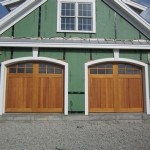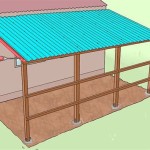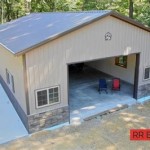Famous Garage Pantry Cabinet Ideas For Kitchen Cabinets
The integration of a garage pantry as an extension of kitchen cabinet storage has gained popularity due to the growing need for organized and accessible food storage solutions. The garage, often overlooked as a potential storage space, presents a practical alternative, especially for homeowners with limited kitchen space. This article explores various garage pantry cabinet ideas, focusing on maximizing storage efficiency and maintaining organized food supplies. Considerations such as climate control, pest control, and accessibility are important aspects of this topic, and will be addressed throughout.
When considering a garage pantry, it is essential to acknowledge that the garage environment differs significantly from the kitchen. Garages are typically exposed to fluctuating temperatures, humidity, and potential pest infestations. Therefore, planning a garage pantry requires careful selection of durable, climate-resistant cabinets and implementing pest control measures.
Maximizing Space with Vertical Storage Solutions
One of the primary goals of a garage pantry is to effectively utilize vertical space. This can be achieved through several cabinet configurations and storage accessories, optimizing the available area and increasing overall storage capacity.
Tall, narrow cabinets are ideal for storing canned goods, jars, and bottled items. These cabinets can be customized with adjustable shelves to accommodate different sizes and types of food products. Implementing pull-out shelves within these tall cabinets improves accessibility, preventing items from getting lost at the back. Consider cabinets extending to the ceiling to leverage the entire vertical space. This is particularly useful for storing bulk items or less frequently used supplies.
Wall-mounted shelving systems are another effective way to utilize vertical space in a garage pantry. Adjustable shelving units allow for flexible storage configurations that can be tailored to accommodate varying item sizes. Wire shelving is a cost-effective option that facilitates air circulation, while solid shelving provides a more stable surface for heavier items.
Another option for maximizing vertical space is to use pantry organizers such as tiered shelving units, which create more storage levels within the cabinet or on open shelves. These organizers are particularly useful for storing smaller items such as spices, condiments, and snack foods. Door-mounted racks are also valuable for storing light-weight items and are easily accessible.
When designing the layout, prioritize items based on frequency of use. Commonly used items should be placed at eye level or within easy reach, while less frequently used items can be stored on higher or lower shelves. This arrangement promotes efficiency and minimizes clutter.
Selecting the Right Garage Pantry Cabinet Materials
The selection of appropriate cabinet materials is crucial for ensuring the longevity and durability of a garage pantry. Given the fluctuating environmental conditions typical in garages, materials must be resistant to moisture, temperature changes, and potential pest damage.
Metal cabinets are a robust and durable option for garage pantries. They are resistant to moisture, pests, and extreme temperatures. Stainless steel cabinets are particularly well-suited for garage environments due to their resistance to corrosion and rust. Metal cabinets are available in various sizes and configurations, including freestanding units, wall-mounted cabinets, and modular systems.
Plastic cabinets are a cost-effective alternative to metal cabinets. They are lightweight, easy to clean, and resistant to moisture and pests. However, plastic cabinets may not be as durable as metal cabinets and may be more susceptible to damage from heavy loads or extreme temperatures. High-density polyethylene (HDPE) plastic cabinets are a more durable option, offering improved resistance to impact and temperature changes.
Wood cabinets can be used in garage pantries, but they require specific treatments to protect them from moisture and pests. Solid wood cabinets are generally more durable than particleboard or MDF cabinets. However, they are also more expensive. If using wood cabinets, ensure they are properly sealed and finished with a moisture-resistant coating. Consider using cabinets made from pressure-treated lumber, which is resistant to rot and insect damage. The key consideration is the additional maintenance required to preserve wood's integrity in the garage's often harsh environment.
Regardless of the material chosen, ensuring that the cabinets are properly sealed and insulated can help protect the contents from temperature fluctuations and humidity. Consider adding weather stripping around the cabinet doors and edges to create a tighter seal.
Implementing Climate and Pest Control Measures
Maintaining a consistent temperature and humidity level and controlling pests are essential for preserving the quality of food items stored in a garage pantry. Implementing appropriate climate and pest control measures can help prevent spoilage, mold growth, and pest infestations.
Climate control in a garage can be achieved through various methods. Insulating the garage walls and ceiling can help regulate temperature fluctuations. Consider installing a garage heater or air conditioner to maintain a consistent temperature, especially in regions with extreme weather conditions. A dehumidifier can help reduce humidity levels, preventing mold growth and condensation inside the cabinets. Alternatively, a garage fan can increase air circulation and help regulate temperature. These strategies contribute to a more stable environment conducive to food preservation.
Pest control is another critical aspect of maintaining a garage pantry. Seal any cracks or openings in the garage walls and foundation to prevent pests from entering. Use caulk or expanding foam to fill gaps around pipes and electrical wiring. Store food items in airtight containers to prevent pests from accessing them. Glass or plastic containers with tight-fitting lids are ideal for storing dry goods such as flour, sugar, and cereal.
Regularly inspect the garage pantry for signs of pests, such as droppings, gnaw marks, or insect activity. Use pest traps or bait stations to control pest populations. Consider hiring a professional pest control service to treat the garage and surrounding areas. Natural pest control methods, such as using bay leaves or peppermint oil, can also help deter pests from entering the pantry.
In addition to these measures, consider the placement of the garage pantry in relation to potential pest entry points. Avoid placing the pantry near exterior doors or windows. Consider creating a buffer zone between the pantry and the garage floor by using raised platforms or shelving units. Regularly cleaning the garage and removing any debris or clutter can also help prevent pest infestations.
Organization Strategies for Efficient Use
An effectively organized garage pantry significantly enhances its usability and prevents food waste. Employing strategic organizational methods ensures easy access to stored items and facilitates inventory management.
Implementing a labeling system is a fundamental aspect of pantry organization. Clearly labeling shelves, drawers, and containers allows for easy identification of stored items. Use labels with large, legible text and consider color-coding them for different food categories. Labeling not only saves time searching for items but also helps to maintain a structured inventory.
Categorizing food items based on type, expiration date, or usage frequency is another effective organizational strategy. Grouping similar items together, such as canned goods, snacks, or baking supplies, simplifies the process of locating specific ingredients. Store items with earlier expiration dates at the front of the shelves to ensure they are used before they expire, minimizing food waste. Separate items that are frequently combined, such as pasta and sauce, for easier meal preparation.
Utilizing clear storage containers provides visual access to stored items and facilitates quick inventory assessments. Clear plastic or glass containers allow you to see the contents without having to open them, reducing the risk of misplacing items or forgetting what is stored. Stackable containers are an excellent option for maximizing space and maintaining a tidy pantry. Consider using containers of varying sizes to accommodate different types of food items.
Rotate stock regularly to ensure that older items are used before newer ones. When restocking the pantry, place new items at the back and move older items to the front. This practice, known as the "first in, first out" (FIFO) method, helps to prevent food from expiring and minimizes waste. Regularly check expiration dates and discard any outdated items. Maintaining an inventory list can assist in tracking what is stored and when it needs to be used.
Integrating specialized storage solutions can further enhance pantry organization. Wire baskets are ideal for storing produce, bread, or snack foods. Bins with lids are useful for storing bulk items such as flour, sugar, or rice. Drawer dividers can help organize utensils, spices, or small accessories. These specialized solutions contribute to a more efficient and organized pantry space.
Accessibility Considerations in Garage Pantries
Ensuring easy accessibility within a garage pantry is crucial for its practical use, especially for individuals with mobility limitations. Designing a pantry layout that promotes accessibility enhances its convenience and overall functionality.
Adjustable shelving allows for customization of shelf heights to accommodate various item sizes and accessibility needs. Shelves should be easily adjustable to provide flexibility in organizing and accessing stored items. Consider using pull-down shelves or lazy Susans to improve access to items stored on higher shelves. These features make it easier to reach items without straining.
Adequate lighting is essential for ensuring visibility within the garage pantry. Install bright overhead lighting to illuminate the entire space. Consider adding under-cabinet lighting to provide focused illumination on shelves and countertops. Ensure that light switches are easily accessible and located near the entrance of the pantry. Proper lighting enhances safety and makes it easier to locate items.
Clear pathways and sufficient space for maneuvering are critical for accessibility. Ensure that the aisles between shelves are wide enough to accommodate wheelchairs or walkers. Avoid placing obstacles in the pathways that could create hazards. A minimum aisle width of 36 inches is recommended for wheelchair accessibility. Consider using doorless cabinets or cabinets with sliding doors to maximize space and improve access.
Lowering shelf heights and optimizing storage within reach can significantly improve accessibility. Place frequently used items on shelves within easy reach, between waist and shoulder height. Avoid storing heavy or bulky items on high shelves, as they can be difficult to lift and handle. Consider using pull-out drawers or baskets to bring items closer to the user. These modifications enhance convenience and minimize the risk of injury.
Implementing universal design principles can further enhance accessibility in a garage pantry. Universal design focuses on creating spaces that are usable by people of all ages and abilities. This includes features such as lever-style door handles, easy-to-grip knobs, and touch-activated lighting. By incorporating these principles, the garage pantry can be designed to meet the needs of a diverse range of users.

25 Ideas For Kitchen Appliance Garages

Garage Storage Cabinets Design And Install Closet Factory

Check Out These Simple Ideas For Kitchen Storage Organisation

Diy Garage Cabinets And Miter Saw Station Jenna Sue Design

How To Hide Small Kitchen Appliances Without A Butler S Pantry

Eliminating Kitchen Clutter Has Never Looked More Stylish The New York Times

20 Kitchen Storage Ideas Extra Space

Walk In Pantries Vs Cabinet

20 Kitchen Storage Ideas Extra Space

Eliminating Kitchen Clutter Has Never Looked More Stylish The New York Times
Related Posts








